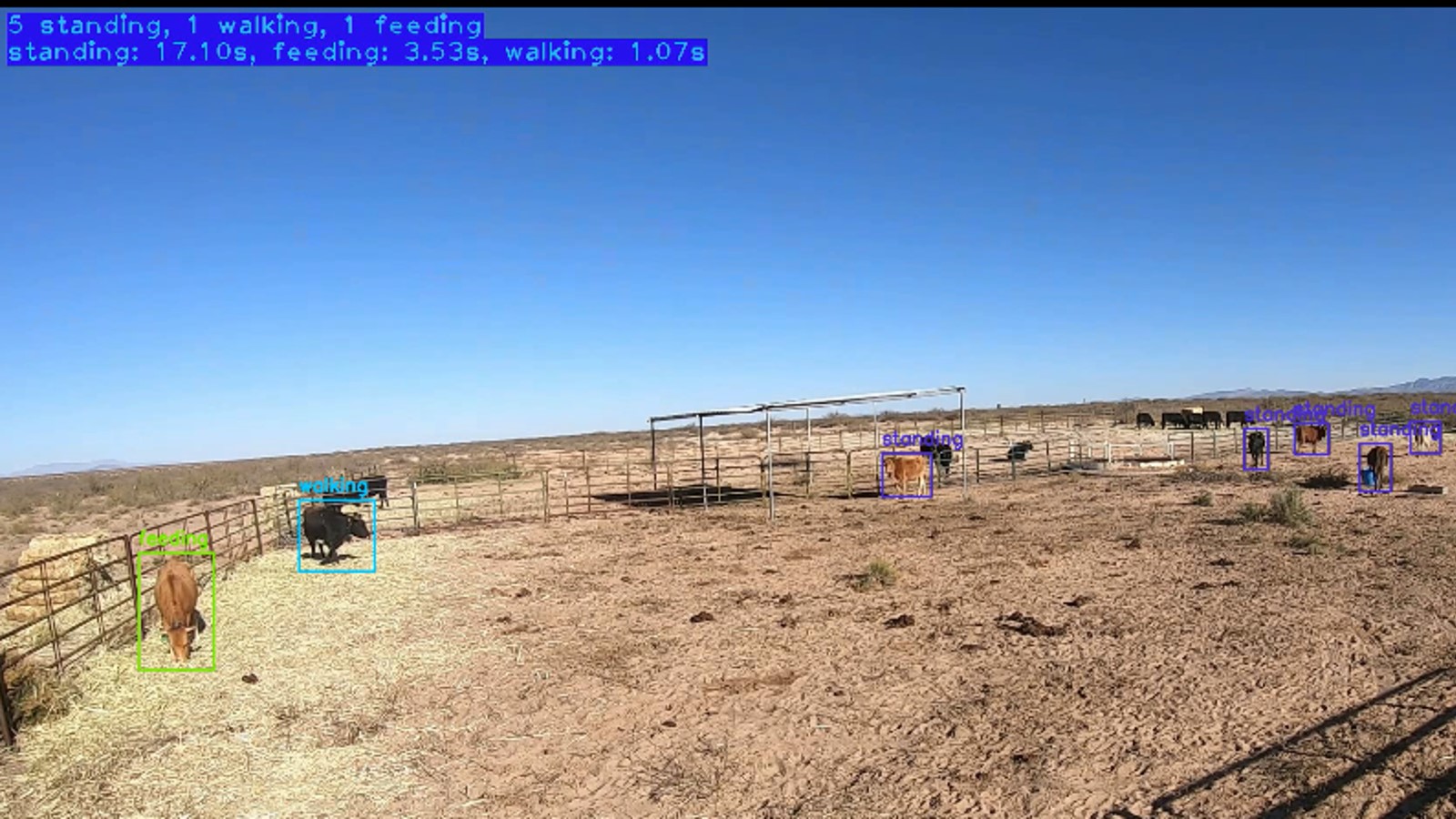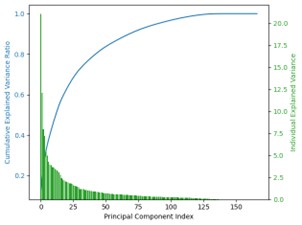
Detection of Cattle Behavior Utilizing YOLOv8 and OpenCV
In this project, I developed a dataset and implemented a deep learning model for detecting cattle behaviors in videos. A comprehensive dataset of 92,592 images representing four cattle behaviors (standing, walking, feeding, and resting) was compiled, along with 104 selected videos for annotation. The data was processed using the CVAT annotation tool, which was utilized to annotate image frames, ensuring accurate labeling of each behavior. A YOLOv8 deep learning model was then trained to classify these behaviors, with a particular focus on improving the detection of the "walking" behavior. To achieve this, I integrated an OpenCV background subtraction model to develop a mechanism called YOLO-BS, which significantly boosted the model's performance in detecting movements accurately. In addition to behavior classification, OpenCV was used to visualize the results, displaying bounding boxes, behavior labels, and the count and total duration of each behavior in the output video.
Technologies Used: Python, Deep learning, YOLOv8, CVAT, OpenCV, TensorFlow.

ETL Pipeline for Real-Time Stock Data Analysis and Storage
This project involves the creation of an ETL (Extract, Transform, Load) pipeline to efficiently handle and analyze real-time stock data. Using an API, stock data is extracted in real time, with key financial indicators such as the Simple Moving Average (SMA) and Range Ratio calculated during the transformation phase. The processed data is then loaded into an SQLite database for persistent storage. To ensure fast processing, multi-threading techniques were employed to handle multiple stock data requests simultaneously, reducing processing time significantly. Additionally, the results of the transformations are exported to a text file, providing a human-readable format for easy analysis.
Technologies Used: Python, SQL, SQLite.

Telecom Customer Churn Prediction with Machine Learning
In this project, I explored the problem of customer churn prediction in the telecom industry using machine learning techniques. Using a publicly available dataset from Kaggle, I performed extensive Exploratory Data Analysis (EDA) to uncover patterns, correlations, and insights that could help predict customer churn. The project involved Principal Component Analysis (PCA) for dimensionality reduction to improve model performance and training efficiency. I compared the performance of several machine learning models, including Logistic Regression, Decision Tree, K-Nearest Neighbors (KNN), and AdaBoost. After fine-tuning and optimizing these models, I achieved more than 90% accuracy, precision, and recall, demonstrating the models' ability to effectively predict which customers are likely to churn.
Technologies Used: Python, Machine learning, KNN, Decision Tree, Logistic Regression, AdaBoost, PCA, EDA, Pandas, Matplotlib, Seaborn.